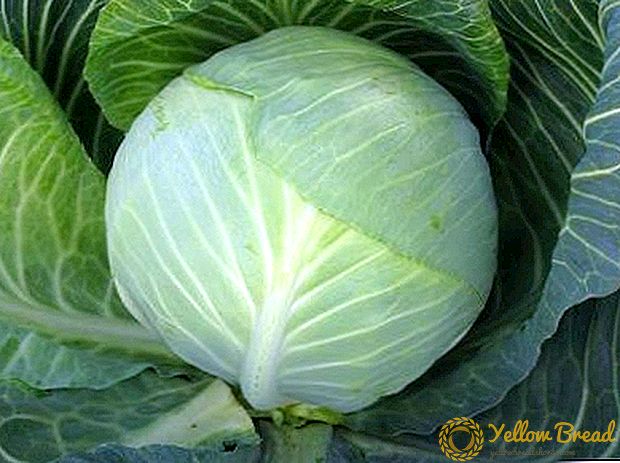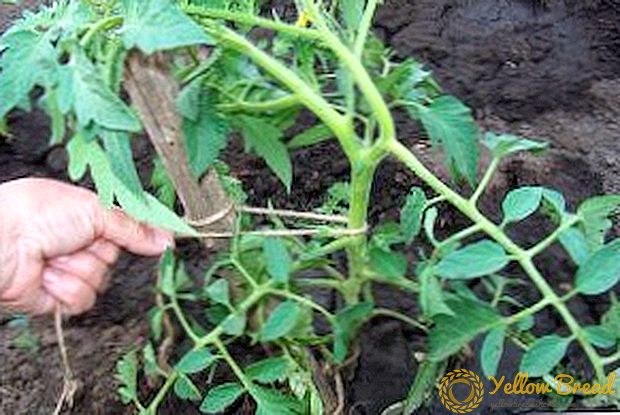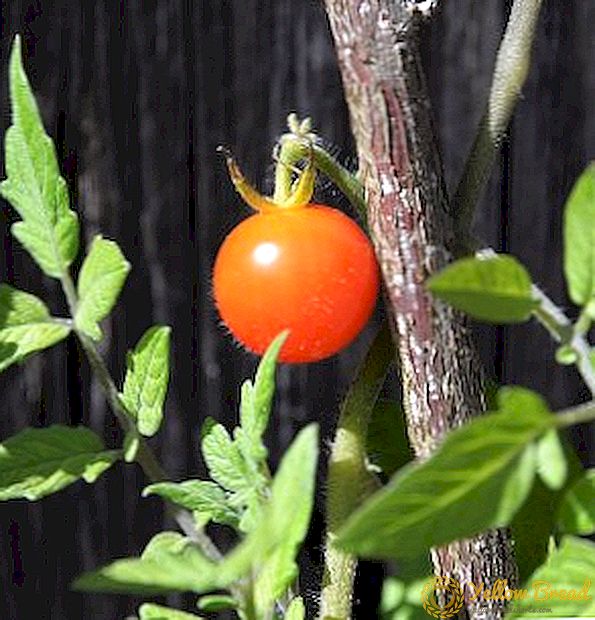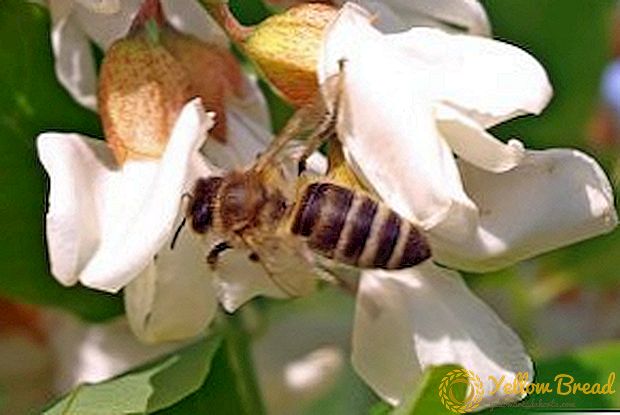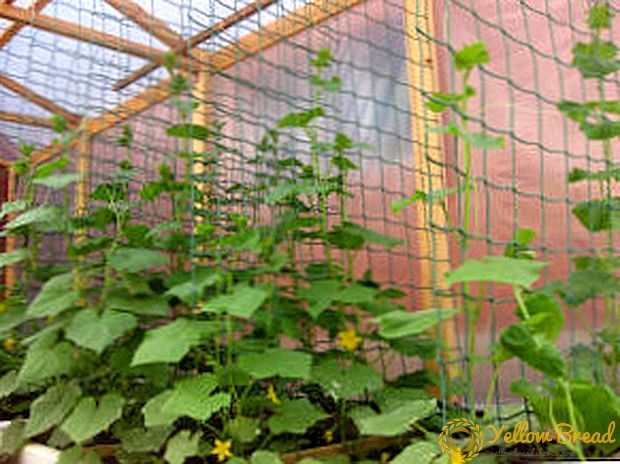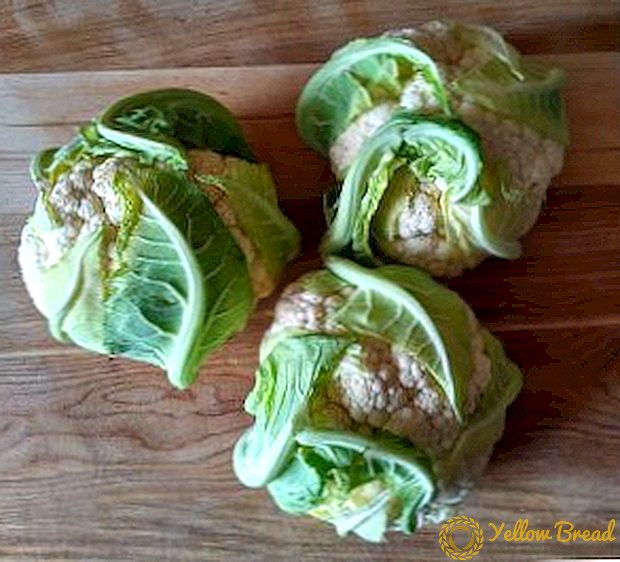 Growing a vegetable like cauliflower is not so easy in our climatic conditions.
Growing a vegetable like cauliflower is not so easy in our climatic conditions.
However, knowing the characteristics of caring for it and observing all the necessary technologies for planting and growing, you can please yourself and loved ones with the most beautiful, tasty and healthy cabbage.
- The best varieties of cauliflower
- When to plant
- Sowing seeds
- Capacity and soil for planting
- Seeding technology
- Care of seedlings
- Formation and preparation of beds
- Transplanting
The best varieties of cauliflower
Cauliflower is rich in vitamins C, A, B, E, D, K, H, U and components such as amino acids, carbohydrates, starch, fiber, pectins, organic acids, natural sugars, proteins, polyunsaturated acids, biotin, purine compounds . Types of cauliflower differ in terms of ripening. The difference in ripening of each variety is about 14 days.
 Criteria for choosing varieties:
Criteria for choosing varieties:- It is better to acquire varieties that are resistant to adverse weather conditions, not susceptible to the level of moisture of the earth and the type of soil.
- Varieties must be resistant to pests and diseases.
- Depending on the desired result, crops should be selected - obtaining a high-yielding product (usually hybrid species are used) or the possibility of selection (varietal species are selected).
- It is necessary to take into account the early ripening of varieties depending on the climatic conditions of the planting region. So, in areas with short, cool and heavy rainfall in the summer it is better to use low-maintenance varieties of early ripening. And in the southern regions it is possible to grow more capricious, but fruitful and tasty varieties of medium and late ripeness of cabbage.
 Vegetable culture is divided into the following groups:
Vegetable culture is divided into the following groups:- Early maturing - varieties, ripe heads of which are formed 90 days after planting seeds. Ultra early ripening is already on the 55-65th day after sowing seeds. The collection of seed material can be made after 170-205 days. In this group you can find common varieties and hybrids: "Snowball", "Bolero", "Early Gribovskaya 1355", "Guarantee", "Dachnitsa", "Express", hybrids "Movir 74", "Malimba F1", "Alabaster F1 "," Boldo F1 ".
- Mid-season - have a longer maturation period, up to 130 days. This factor affects the increase in the shelf life of the crop. Seed maturity is achieved only after 205 days. Medium maturity varieties include: White Beauty, Bora, Bravo, Autumn Giant, Flora Blanca, Parisian, Mid-season Fargo, Ondine, Pioneer, Otechestvennaya , hybrids "Classic F1", "Chambord F1".
- Late-ripening - varieties ripening for more than 130 days and finding popularity mainly in the southern regions. In the central regions, it is possible to prevent freezing of the crop with the help of greenhouse cultivation. Seed ripening occurs up to 220 days. The undoubted advantage of late varieties - in their yield, head size and high keeping quality of the crop. Hybrid forms are preferably grown: Amerigo F1, Cortes F1, Fortrose F1, Skywalker F1.
- Exotic varieties and hybrids - modern breeders create cauliflower species of unusual color and shape. Varietal and hybrid specimens with pink orange and purple inflorescences have already been bred. From early ripe unusual species - "Graffiti F1" (purple), "Rosamund" (bright lilac color), "Emerald goblet" (salad-green cone-shaped inflorescences).Mid-season - Yarik F1 (orange), Veronica F1 (cone-shaped yellow-green inflorescences). Medium late variety - "Sicily" (has dark scarlet heads).

When to plant
Options when sowing cauliflower on seedlings are several:
- Early ripe species sown on March 15-22 with further landing on the ground in 30-55 days.
- Mid-season varieties sown on March 30 - April 12 and planted in the ground after 35-45 days.
- Medium late instances go on sowing on April 25 - May 12 with disembarkation in 30-40 days.
- Late species, crops that are harvested in the fall, sown on June 5-17 and planted in the ground after 32-35 days.

Sowing seeds
Planting seeds of early cauliflower for seedlings begins with the preparation of soil and planting tanks.
Capacity and soil for planting
Quality cauliflower seedlings are obtained in two ways:
- usual (with planting in large boxes or greenhouse);
- pottery (planting in peat pots or cassettes).
Planting seedlings in cassettes facilitates the process of growing cauliflower - picking, processing plants and watering.
All types of peat are suitable for soil preparation. It is well enriched with oxygen, is not compacted and perfectly absorbs moisture. When using lowland peat, 1/3 of the sawdust should be added. Next, peat mixture must be steamed for 2 hours and add nitrogen fertilizer to it.(urea, ammonium nitrate or complex fertilizers).  In addition to 10 liters of soil you need to make:
In addition to 10 liters of soil you need to make:
- complex fertilizers 50-70 g;
- dolomite flour 300-450 g;
- wood ash 1 cup.
Seeding technology
Seed preparation consists in the selection of large specimens; this increases the yield of cauliflower by about 30%. Next, planting material should be left in hot water (up to 50 ° C) for 20 minutes, quickly cooled and treated with a solution of potassium permanganate, formalin or garlic juice, leaving the seeds for disinfection for several hours.
Care of seedlings
Sprouted shoots need to get rid of the greenhouse and move to a cool (no more than 10 ° C) lighted place. Young seedlings of cauliflower when grown at home are usually placed on the windowsill. A sharp change in temperature and light will stop the abundant growth of plants, and the seedlings will not stretch. After 5 days, the air temperature must be increased to 15 ° C.
In order to avoid soil erosion and damage to seedlings, it is desirable to produce watering with a sprayer. Preventive measures to combat the disease of black leg seedlings are carried out in the form of the addition of fungicides to the irrigation water - Bactovita, Fundazole or Fitosporina.
The development of fungal diseases can be prevented by avoiding excessive wetting of the earth, especially at low air temperatures.In the case of the first signs of disease, drooping shoots, infected plants, along with an earthy clod, will have to be removed, and the remaining seedlings treated with antifungal drugs and temporarily reduce the number of waterings. Not superfluous will sprinkle sprouts with wood ash. 
When growing seedlings should be aware of its fertilizer:
- first feeding after the formation of two leaflets is carried out by spraying cabbage with complex preparations;
- second stage fertilizer carried out for the prevention of disease with a solution of boric acid (0.2 g) and copper sulfate (1.15 g);
- third dressing occurs before hardening by spraying each bush with 20 ml of a solution consisting of 1 tablespoon of potassium sulfate, 1 tablespoon of urea and 10 liters of water.
Formation and preparation of beds
Only a light and nutritious open ground will provide an opportunity to grow good quality vegetables. The soil must be prepared in advance. In the autumn, after digging, it is necessary to fertilize the land with humus or compost (10 kg of fertilizer per 1 sq. M of soil). Loosening should be deep, and fertilizer abundant - this will bring a good harvest in the next season.  In addition to organic fertilizers, cauliflower must be provided with mineral:
In addition to organic fertilizers, cauliflower must be provided with mineral:
- superphosphate;
- potassium;
- wood ash.
Better soil freezing in winter will help to destroy pests, so the land does not need to be leveled.
If it was not possible to carry out the autumn digging, on the basis of 10 square meters of soil at the beginning of the season it is necessary to deposit in the ground:
- humus (3-5 kg);
- magnesium sulphate (20-30 g);
- urea (100 g);
- boric acid (120 g);
- double superphosphate (100 g);
- potassium salt (120 g);
- wood ash (1.5 kg).

Transplanting
It is necessary to place the early cauliflower at a sufficiently large distance from each other - at least 25 centimeters. The width of the rows should be at least 70 centimeters. Planting later varieties produced at a distance of 10 centimeters from each bush, both in length and in width.
Young bushes are recommended to cover with plastic wrap or spunbond until full rooting of the cabbage. This will help prevent the cruciferous flea attack and protect young plants from sunburn.
On the 20th day after planting the bushes need to spud. Approximately 10 days after this, a second hilling can be performed. 3 weeks after planting, the seedlings need to feed. To do this, use an aqueous solution of mullein in a ratio of 1 part of the substance to 20 parts of water. Fertilizing a second time can be after 2 weeks, adding one tablespoon of "Crystallin" to a liquid mullein.The third feeding is done in a month using a solution of 5 liters of water and one tablespoon of "Nitrophoska".
Having mastered the simple process of sowing cauliflower and caring for its seedlings, you will definitely be rewarded with a tasty, rewarding and generous harvest.

